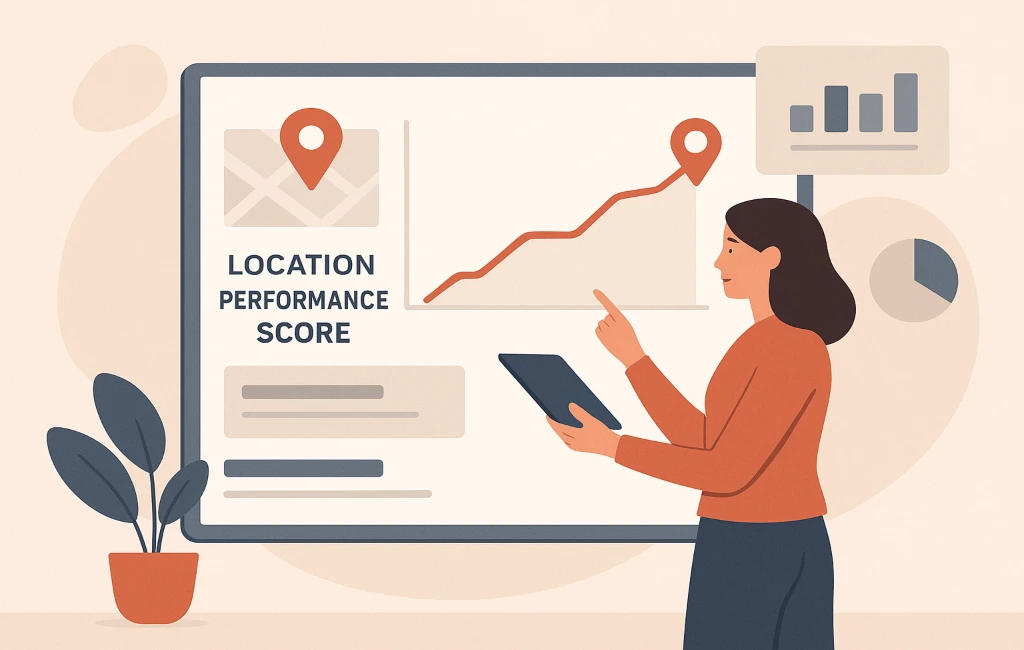AI, Authenticity & Attribution: 3 Non-Negotiables for Smarter Location Marketing in 2025
Marketers—2024 was a wild ride. From AI breakthroughs to shifting customer expectations, it was a year of change. As we move into 2025, it’s time to refocus on what truly drives results. This year, your success in local marketing depends on three essential pillars: leveraging AI, staying authentic, and proving ROI through revenue attribution.
1. AI Is Your Marketing Co-Pilot
You’ve heard it a hundred times, but it’s not just hype—AI in marketing is the engine driving efficiency, personalization, and scalable insights. In 2025, AI isn’t just helpful, it’s essential for location marketing success.
From campaign personalization to automated review management, AI enables you to spend less time on repetitive tasks and more time on high-impact strategy. Whether it's optimizing ads, analyzing customer data, or automating responses, AI tools can transform the way you manage multiple locations.
🔍 Did you know? According to Gartner, 75% of marketing teams will use AI for at least 30% of their tasks by 2025. Plus, AI-powered marketers are projected to see 60% higher revenue growth.
But AI isn’t magic—you still need to steer the ship. Use it to amplify your expertise, not replace it. Your instincts and creativity are what bring the tools to life.
2. Authenticity Wins Trust, Simplicity Drives Results
2. Authenticity Wins Trust, Simplicity Drives Results
With access to endless data and tools, it's tempting to overcomplicate things. But authenticity and fundamentals are what build lasting success in location-based marketing.
Here’s how to simplify and stay real:
- Know your audience: Dive into customer behavior to personalize local experiences and boost local search visibility. Focus on keywords like “near me,” hyperlocal terms, and location-specific offers.
- Optimize for visibility: Keep Google Business Profiles and Apple Maps listings accurate. Your NAP data (Name, Address, Phone) must be spot-on. Add relevant categories, links, services, and attributes to get into the Google Pack and rank higher in map results.
- Reputation matters: Online reviews drive trust and conversions. Encourage reviews on Google, Yelp, and Trustpilot—and don’t just collect them, reply to them. Use a review management platform to automate and track responses.
- Engage your community: Share hyperlocal content like neighborhood events, store news, and local offers. These not only boost community trust but also help your rankings in local SEO for multi-location brands.
💡 Pro Tip: 86% of consumers prioritize brand authenticity—yet only 57% of brands are perceived as authentic. Be the brand that shows up as human.
3. Revenue Attribution: Prove Your Impact
3. Revenue Attribution: Prove Your Impact
In today’s ROI-driven world, vanity metrics like clicks aren’t enough. CMOs want to know: how does your local marketing drive real business outcomes?
That’s where Location Performance Optimization (LPO) and Location Performance Score (LPS) come in. LPO connects fragmented data—visibility, reputation, and engagement—to actual revenue. And LPS rolls them all into one clear metric.
How to Connect Marketing to Revenue:
- Start with simple metrics: Use data points like “clicks for directions” to estimate revenue. Multiply the number of clicks by your average conversion rate and purchase value to find your local SEO ROI.
- Think beyond today: Look at lifetime value. How do consistent visibility and trust translate into long-term revenue?
- Streamline with LPO platforms: Tools that consolidate data into actionable insights help you move from guesswork to strategy.
- Automate analytics: Use dashboards and location marketing performance software to track KPIs at scale and free up your team’s time.
📈 Stat Check: 73% of marketers lack clear KPIs for local marketing. Don’t be one of them—LPO can give you the edge.
The 2025 Game Plan: From Overload to Impact
The 2025 Game Plan: From Overload to Impact
To thrive in 2025, location marketers must focus on what drives measurable results.
Your 3 Must-Haves:
- AI-powered marketing to automate, personalize, and scale faster.
- Authentic, localized engagement built on SEO basics and human connections.
- Revenue attribution through LPO and metrics like LPS to prove your impact.
By investing in these pillars, you’ll move from scattered efforts to a focused, results-driven strategy. Whether you manage 5 locations or 500, now is the time to embrace smarter, scalable, and more authentic marketing.
Let’s tackle location marketing in 2025—together. Ready to cut through the noise and deliver ROI?

.webp)
